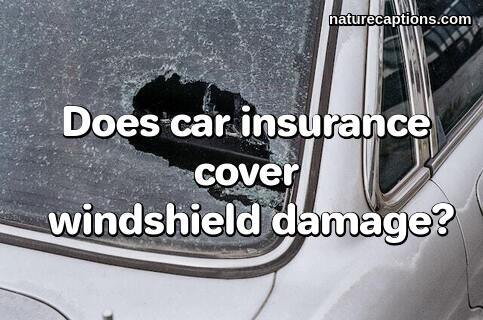Yes, car insurance can cover windshield damage, depending on the type of coverage you have. Most insurance policies offer two types of coverage for windshield damage: comprehensive coverage and glass coverage.
Comprehensive coverage is an optional type of coverage that covers damage to your vehicle from non-collision incidents like theft, fire, or weather events.
Car insurance cover windshield damage
If your windshield is damaged due to a covered event under your comprehensive coverage, such as a hail storm, falling tree limbs, or a rock hitting your windshield, your insurance policy may cover the cost of repairs or replacement.
Glass coverage is an add-on to your car insurance policy that specifically covers windshield damage. This coverage typically has a lower or no deductible, which means you won’t have to pay as much out of pocket for repairs or replacement.
It’s important to note that if you have liability-only coverage, which is the minimum required coverage in many states, it will not cover windshield damage. Also, Check Out Our Home Insurance cost Manufactured Home Insurance .

In addition, some insurance policies may have specific exclusions or limitations when it comes to windshield coverage, so it’s important to review your policy carefully and understand your coverage options.
If your windshield is damaged, it’s important to contact your insurance company as soon as possible to report the damage and discuss your options for repair or replacement.
Many insurance companies work with preferred auto glass repair shops and may be able to provide you with a list of approved providers to choose from.
How to Claim For Windshield Damage?
If you need to make a claim for windshield damage, follow these steps:
- Contact your insurance company: Call your insurance company or log in to your online account to report the damage. Provide them with the details of the damage and the date and time it occurred.
- Provide documentation: Take photos of the damage and keep any receipts or invoices for repairs or replacement. If the damage was caused by a collision, be sure to file a police report and provide a copy to your insurance company.
- Schedule an inspection: Your insurance company may require an inspection of the damage before authorizing repairs or replacement. They may send an adjuster to inspect the damage or direct you to an approved repair shop.
- Get a repair estimate: Once the damage has been inspected, the repair shop or adjuster will provide you with an estimate for the cost of repairs or replacement.
- Approve the repairs: If the cost of repairs or replacement is within your coverage limits, your insurance company will authorize the repairs. You may be responsible for paying a deductible, which is the amount you agreed to pay out of pocket when you purchased your policy.
- Get your windshield repaired or replaced: If the damage is minor, it may be possible to repair the windshield rather than replace it. If the damage is severe, the windshield may need to be replaced.
Remember to review your policy carefully and understand your coverage options for windshield damage.
Some insurance policies may have exclusions or limitations when it comes to windshield coverage, and your coverage may vary depending on your policy and the state you live in.
Top 10 Most Expensive College In The World
Top 10 Most Expensive Car In the World
What should I do if my insurance doesn’t cover glass damage?
If your insurance policy does not cover glass damage, you may still have some options for repairing or replacing your windshield:
- Check if the damage is covered by your warranty: If your car is still under warranty, check to see if the windshield damage is covered under the warranty. Some car manufacturers offer a limited warranty that covers glass damage.
- Contact a glass repair or replacement company: Many glass repair and replacement companies offer affordable options for fixing or replacing windshields. You may be able to negotiate a lower price or get a discount for paying cash.
- Consider filing a claim with the responsible party: If the damage was caused by another driver, you may be able to file a claim with their insurance company. If they are found to be at fault for the damage, their insurance may cover the cost of repairs or replacement.
- Look for community resources: Some community organizations or local charities may offer assistance with car repairs, including windshield replacement. Check with your local community center or a government agency to see if there are any programs available in your area.
Remember that prevention is key when it comes to windshield damage. To reduce the risk of damage, avoid driving behind large trucks or buses, maintain a safe following distance, and avoid parking under trees or in areas where there is a high risk of debris falling on your car.